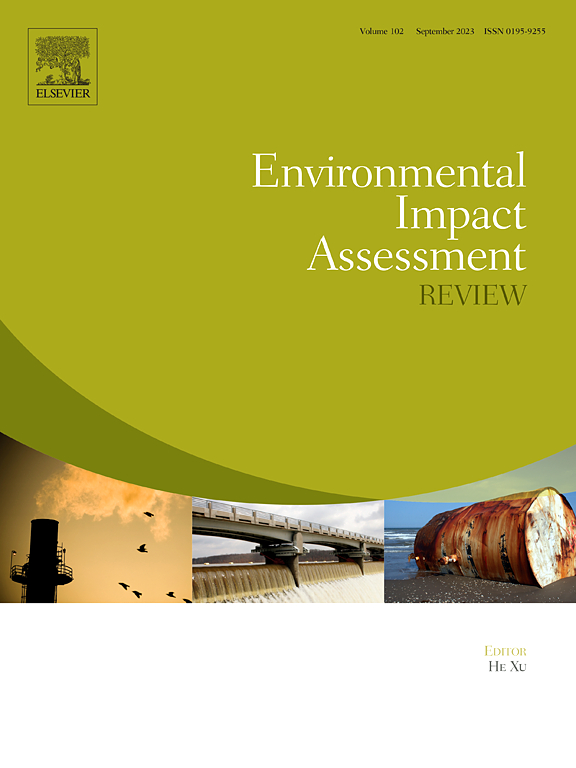Estimating environmental impact of rooftop photovoltaic from the perspective of thermal power transmission
IF 9.8
1区 社会学
Q1 ENVIRONMENTAL STUDIES
引用次数: 0
Abstract
The development of rooftop PV (RPV) plays a significant role in addressing the dual challenges of environmental air pollution and climate change, as RPV-generated electricity is an important substitute of traditional coal-fired power and can promote energy transition. Besides, RPV power generation, due to its self-consumption nature by the users, will not only reduce the local supply of coal-fired power, but also reduce the coal-fired power transmitted from other regions, ultimately leading to the spatial spillover effect of RPV environmental impact. Therefore, this study aims to examine the inter-provincial transmission of RPV environmental mitigation potential and economic benefits in China. Based on the revised rooftop vector data, we estimate that RPV deployment in the built-up and densely populated eastern region will reduce the emission of 45–161, 0.01–0.03 and 0.01–0.03 million tons (MT) yr−1 for carbon, SO2 and NOx in the western China, representing up to 15 %, 14 %, and 11 % of the western provinces' emission from the power and heat sector in 2020, respectively. Correspondingly, the environmental benefits of emission reduction in eastern region show obvious spillover effect (16 %), which lead to additional net benefits of 667–996 billion yuan for the western provinces. Integrating the environmental benefits as a subsidy into power benefits reveals that this type of subsidy yields higher benefits than current policies. Therefore, we provide valuable insights into targeted RPV deployment, promoting environmental efficiency and economic benefits. This new perspective on the spatial spillover effects of renewable energy can also be applied to other countries.

从火电传输的角度估算屋顶光伏的环境影响
屋顶光伏发电是传统燃煤发电的重要替代品,可以促进能源转型,其发展对解决环境空气污染和气候变化的双重挑战具有重要意义。此外,由于RPV发电属于用户自用性质,不仅会减少本地煤电供应,还会减少从其他地区输送的煤电,最终导致RPV环境影响的空间溢出效应。因此,本研究的目的是研究中国RPV环境缓解潜力和经济效益的省际传递。基于修正后的屋顶矢量数据,我们估计,在建筑密集的东部地区部署RPV将减少中国西部地区45 - 161,0.01 - 0.03和0.01-0.03亿吨(MT)年−1的碳、二氧化硫和氮氧化物排放量,分别占2020年西部省份电力和供热部门排放量的15%、14%和11%。与之相对应,东部地区的减排环境效益表现出明显的溢出效应(16%),为西部省份带来了6670 - 9960亿元的额外净效益。将环境效益作为补贴纳入电力效益,可以发现这种补贴比现行政策产生更高的效益。因此,我们为有针对性的RPV部署提供了有价值的见解,从而提高了环境效率和经济效益。这一关于可再生能源空间溢出效应的新视角同样适用于其他国家。
本文章由计算机程序翻译,如有差异,请以英文原文为准。
求助全文
约1分钟内获得全文
求助全文
来源期刊

Environmental Impact Assessment Review
ENVIRONMENTAL STUDIES-
CiteScore
12.60
自引率
10.10%
发文量
200
审稿时长
33 days
期刊介绍:
Environmental Impact Assessment Review is an interdisciplinary journal that serves a global audience of practitioners, policymakers, and academics involved in assessing the environmental impact of policies, projects, processes, and products. The journal focuses on innovative theory and practice in environmental impact assessment (EIA). Papers are expected to present innovative ideas, be topical, and coherent. The journal emphasizes concepts, methods, techniques, approaches, and systems related to EIA theory and practice.
 求助内容:
求助内容: 应助结果提醒方式:
应助结果提醒方式:


